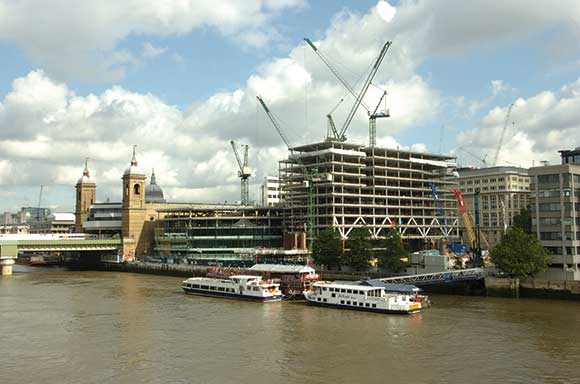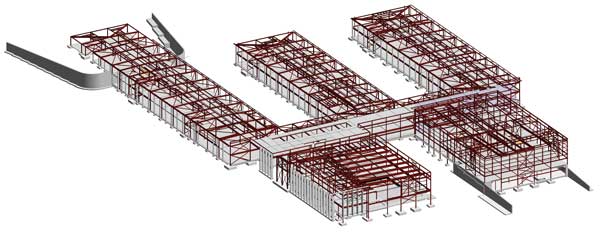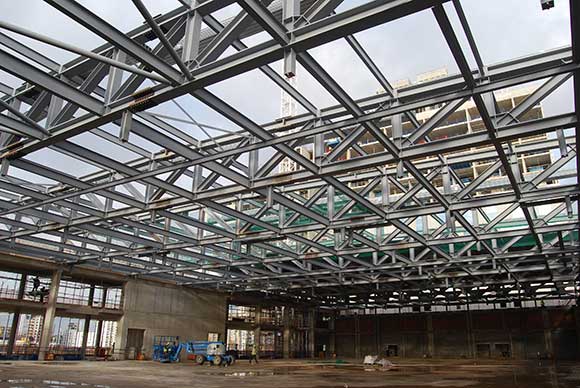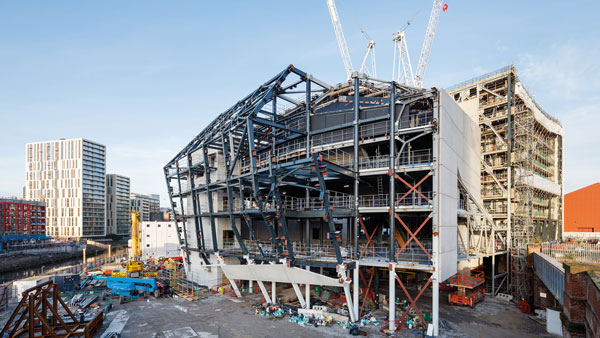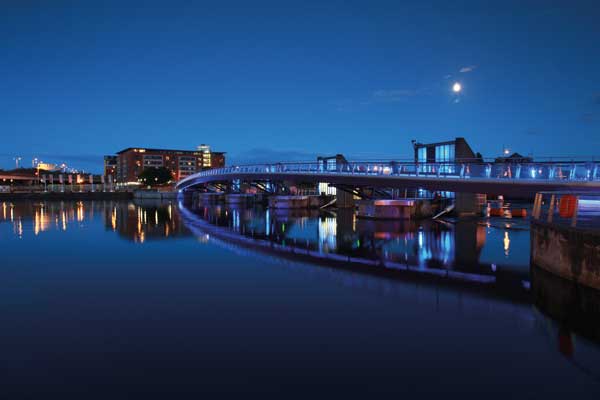Technical
The case for steel – Steel makes sound economics case
The latest in our Case for Steel series highlights the many cost advantages associated with steel construction.
The strong financial case for using steel is often the deciding factor for cost conscious developers. As well as a highly competitive up front initial cost, steel has many other cost advantages that pay-back during the course of construction and throughout the building’s working life – even when a steel framed building or steel bridge reaches the end of its useful life it generates a cash value through recycling, as virtually all structural steel is certain to be.
Other cost benefits derive from factors such as the speed of construction made possible by off site fabrication and offsite application of intumescent and other protective coatings. Steel doesn’t have to be stored on or near to sites and it will be delivered only when the construction programme demands it, saving on expensive storage space. On site waste just doesn’t happen with steel – only what is needed is produced, to the most exacting tolerances, and delivered to site where it is speedily erected by skilled teams.
The cost of constructional steelwork has fallen significantly in real terms over the past 20 years thanks to massive productivity improvements made by Corus, steelwork contractors, intumescent paint manufacturers and others in the supply chain. Sharing the benefits of these productivity gains with clients has helped keep the real terms price of steel below alternatives.
Independent studies carried out over the past 20 years and more have consistently shown steel providing the most economic solution in most cases, whether for one of the new breed of highly sustainable sheds or for a multi storey corporate headquarters. Cost Comparison studies consistently show steel to be the more cost effective choice for buildings.
The market obviously appreciates this as the most recent Market Shares survey, for 2008, shows steel now commands over 70% of the market for multi storey buildings, and a non steel single storey building is hard to find – over 90% are made with steel.
Value engineering usually results in steel being chosen in preference to any concrete alternatives that might have been considered.
Foundations
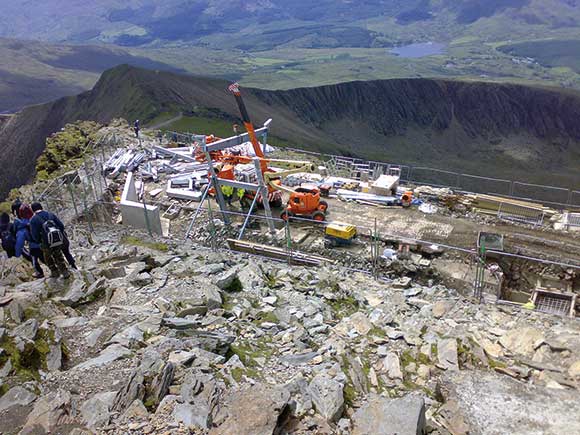 Cost savings in steel buildings start at the foundations, where the loads imposed by a steel frame are up to 50% less than those of a concrete alternative. That means foundations can be much smaller and therefore cost considerably less. Foundations are a major component of overall building costs, so lighter foundation loads can have a big impact on costs.
Cost savings in steel buildings start at the foundations, where the loads imposed by a steel frame are up to 50% less than those of a concrete alternative. That means foundations can be much smaller and therefore cost considerably less. Foundations are a major component of overall building costs, so lighter foundation loads can have a big impact on costs.
Cost savings in a competitive market
In inflation-adjusted terms steel has fallen in price since 1980 and is cheaper than it was 15 years ago. One of the best guarantees of a competitive price is the large number of steelwork contractors that can tender for projects. A competitive sector ensures that customers get value for money – there are some 150 audited steelwork contractor members of the British Constructional Steelwork Association (BCSA).
Speed
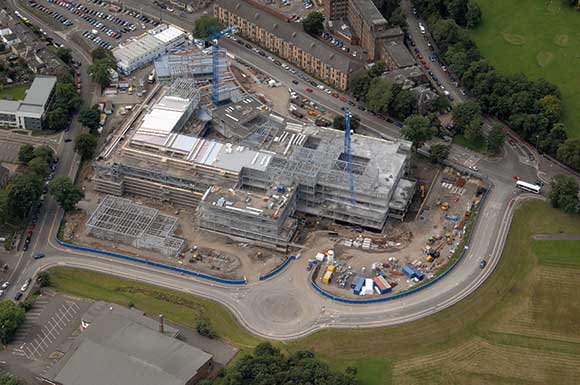 Steel structures can be erected speedily, delivering time savings in the build programme compared to a concrete frame. In fact, speed of erection is often one of the main criteria for selecting steel. The predictability and accuracy of steel components speeds up the process and allows follow-on trades to get to work sooner. A faster build means a faster return on investment through sale or rental income, or productive use of the building.
Steel structures can be erected speedily, delivering time savings in the build programme compared to a concrete frame. In fact, speed of erection is often one of the main criteria for selecting steel. The predictability and accuracy of steel components speeds up the process and allows follow-on trades to get to work sooner. A faster build means a faster return on investment through sale or rental income, or productive use of the building.
Flexibility
 Steel-framed buildings are among the most adaptable and flexible assets a business can invest in. The large column-free spaces created by long-span steel sections mean that buildings can be constantly adapted to cope with the changing requirements of occupants. Building interiors can be easily and economically adapted, avoiding the high costs of redevelopment or demolition.
Steel-framed buildings are among the most adaptable and flexible assets a business can invest in. The large column-free spaces created by long-span steel sections mean that buildings can be constantly adapted to cope with the changing requirements of occupants. Building interiors can be easily and economically adapted, avoiding the high costs of redevelopment or demolition.
Durability
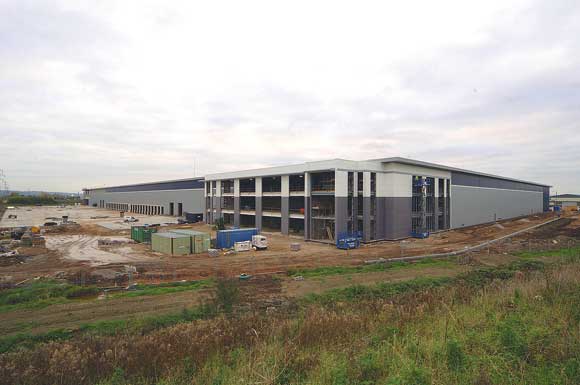 Steel-framed structures are highly durable and do not age or decay as quickly as other construction materials, lasting longer before refurbishment. The flexibility of long spans allows buildings to be adapted more easily, resulting in higher resale values when the original owners decide to dispose of their asset. Steel’s inherent adaptability and flexibility also mean that future changes or extensions – even vertically – can be carried out with minimal disruption and cost.
Steel-framed structures are highly durable and do not age or decay as quickly as other construction materials, lasting longer before refurbishment. The flexibility of long spans allows buildings to be adapted more easily, resulting in higher resale values when the original owners decide to dispose of their asset. Steel’s inherent adaptability and flexibility also mean that future changes or extensions – even vertically – can be carried out with minimal disruption and cost.







